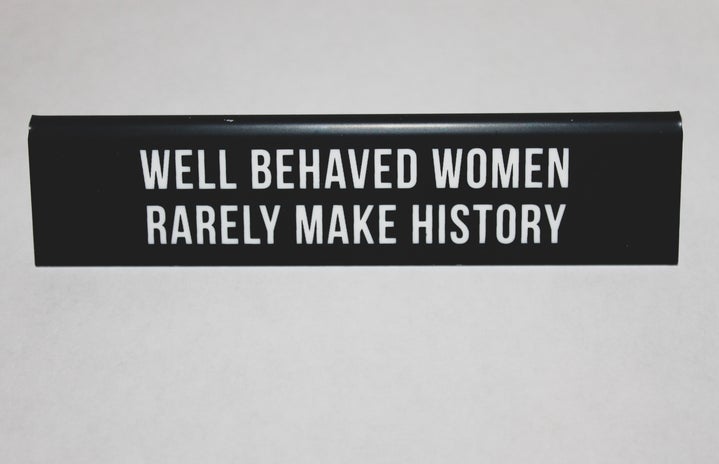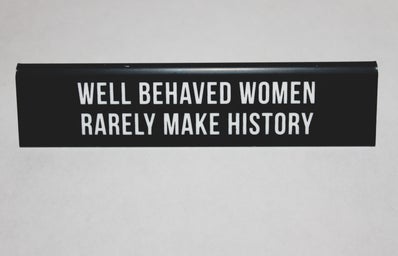Feminism isn’t really a new concept, despite what some people might want you to believe. There have been people fighting for equal rights for women for decades, whether it be education for women, voting rights, or the right to own property. However, true feminism doesn’t end with women. Intersectional feminism has become a term being favored by many, that steps beyond “white feminism” as many call it.
1. What is “White Feminism?”
“White feminism,” also known mainstream feminism is a sort of branch of the movement. It’s what many of us start out with when we first dive into the world of girl power. Many deny that it is truly feminism all together and those people aren’t really wrong… It’s a type of feminism that is known to exclude many women and their experiences, specifically those who are not white, middle-class, cisgender (when your identity corresponds with the gender you were assigned at birth), able-bodied, and/or straight.
There might be several celebrities that come to mind, specifically ones who have been called history-making feminists despite their exclusive version of feminism. Taylor Swift and Jennifer Lawrence and others have been labeled feminist icons lately but in several ways prove not to be. Swift’s growing girl squad seems empowering until you realize, wow, these are all able-bodied, wealthy, mostly-white celebrities. “Would I allowed to be apart of it?” you might wonder. Not to mention her comments toward Nicki Minaj last year and array of other things that perpetuate white feminism. J.Law seems inspiring with her well-known refusal to diet for The Hunger Games as she speaks about women than men in the entertainment industry. But then…she calls Jesse Eisenberg’s OCD “quirky,” continues to body shame other people, calls her childhood style “dykey“, and trivializes rape…a few things that many people found offensive and a bit hypocritical. That’s just the tip of the iceberg for them. Don’t get me wrong though, Swift and Lawrence aren’t the only two celebrities to sport these kinds of behaviors, which becomes worrisome when you realize how many young people look up to them.
2. The Issue with Mainstream Feminism
Despite its nickname, white feminism of course doesn’t describe all white feminists. It’s aimed at those who don’t look past their privilege to see that all women and people have different experiences because we’re, well…different. It ignores the experiences of other groups, expecting what oppression you see is the same for everyone. This is clearly a problem if you expect women of color, for example, to deal with all the same problems as a white woman.
Here’s an example: the wage gap. We’ve all heard about women making only 77 cents to the dollar of what a man makes. Absurd, right? But it gets worse. You see, that’s the wage gap for a caucasian woman. African-American women make 69 cents to the dollar, and Latina women make 58 cents to the dollar! This shows how gender and racial discrimination intersect, something that mainstream feminism tends to either forget about or outright ignore.
3. What is Intersectional Feminism?
Intersectional feminism is real feminism, to be blunt. It doesn’t cater to a certain demographic or mold itself to be easy to swallow. It’s for everyone, not just cisgender women. It also includes transgender women and those who don’t fit the gender binary (someone who doesn’t identify as a boy or a girl often called nonbinary), two groups very often excluded from mainstream feminism. Intersectional feminism works to fight for everyone, taking into account all of our experiences. It even helps other oppressed groups, rather than making it a battle of “who has it worse?” or this group versus another. Many problems such as poverty, LGBTQ+ rights, racial discrimination, mental illness, physical disability, and so on, are not separate issues. Because these things intersect with women’s rights, they’re inherently on the feminist agenda.
4. Why is it important? How do you we become intersectional feminists?
Well, you may have heard of the phrase, “there’s strength in numbers.” That’s pretty true here! Instead of trying to fight for a bunch of different causes, intersectionality helps us to band together. At a school like University of Portland, where we are beginning to embrace our diversity, it’s important to not see our differences as barriers but rather something to connect us! Though we might come from different walks of life, we have an opportunity to educate each other. As for how can we achieve intersectional feminism, Everyday Feminism says it can be done in three steps: 1) examine our privilege, which are places where we hold more power in society than others (i.e. white privilege or being able-bodied), 2) listen to each other, be open to learning about other people’s experiences, 3) practice feminism through a broader, more inclusive lens. It’s important to know that even though you don’t experience some forms of oppression, doesn’t mean you can’t stand with those who do. Being an intersectional feminist means knowing how to be a good ally for others and realizing most problems are not isolated bur rather they occur hand in hand.

